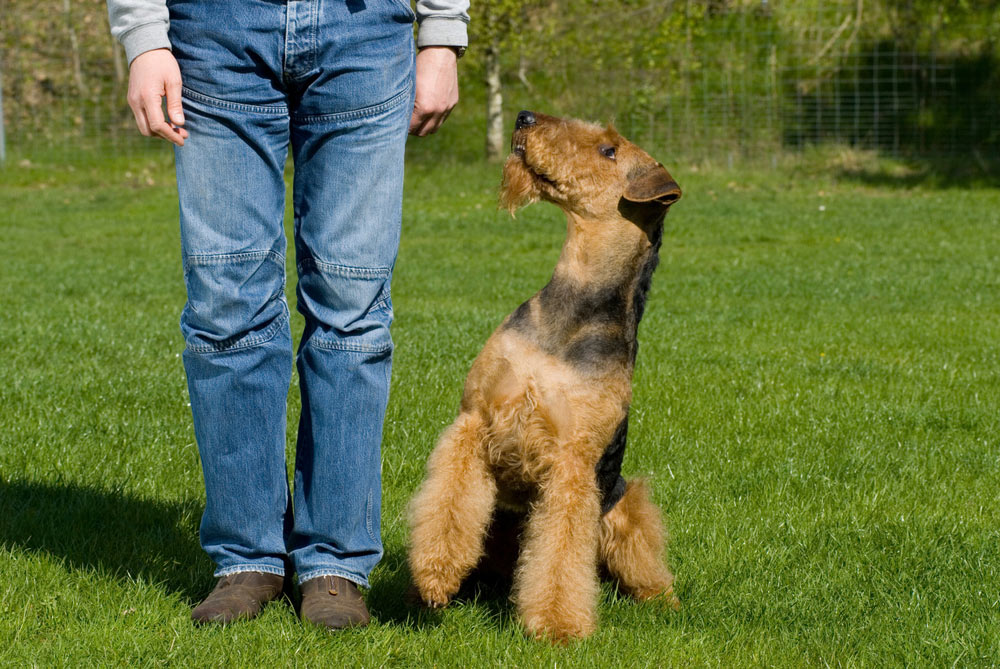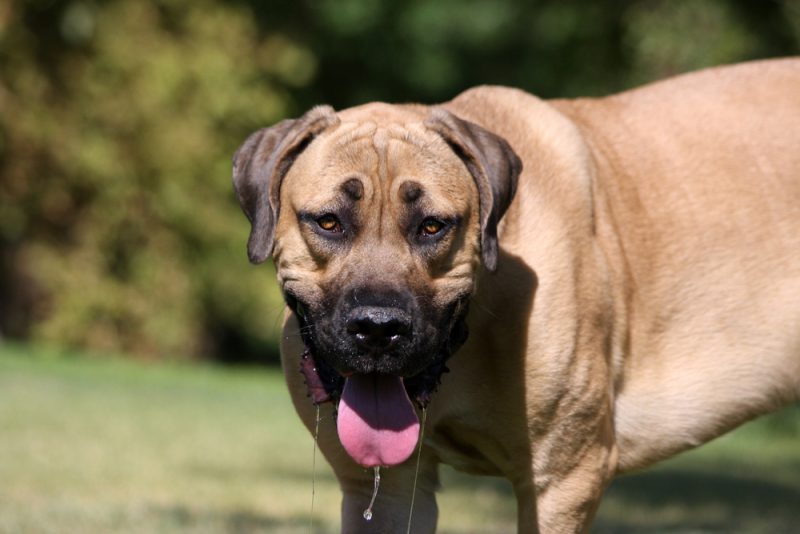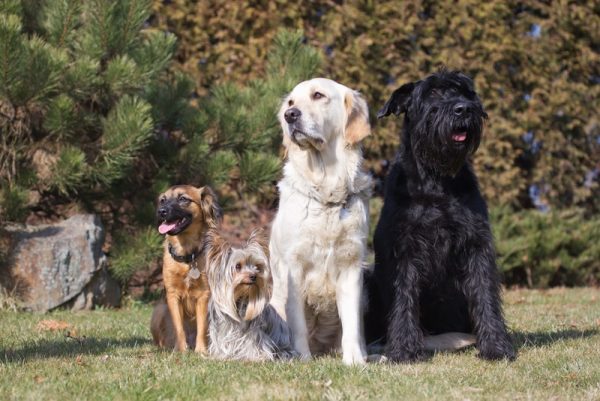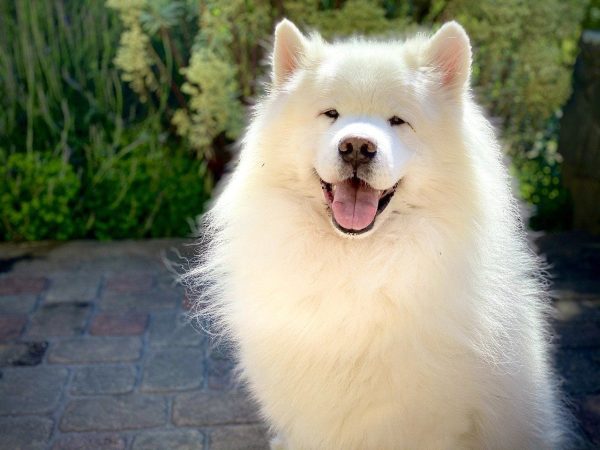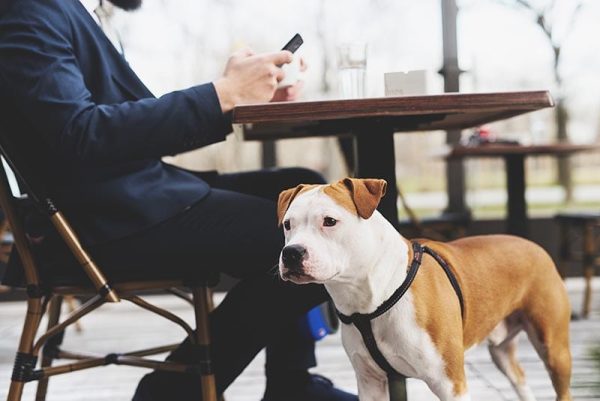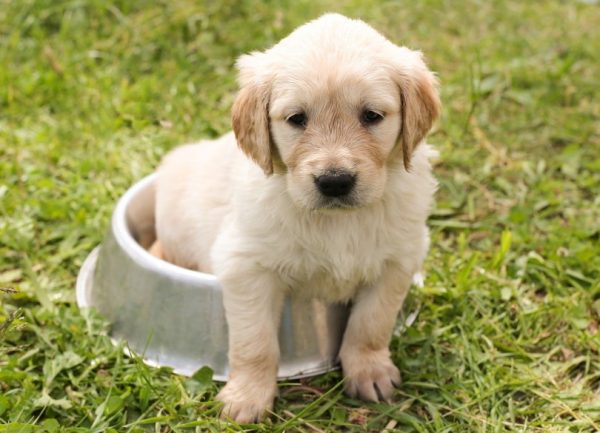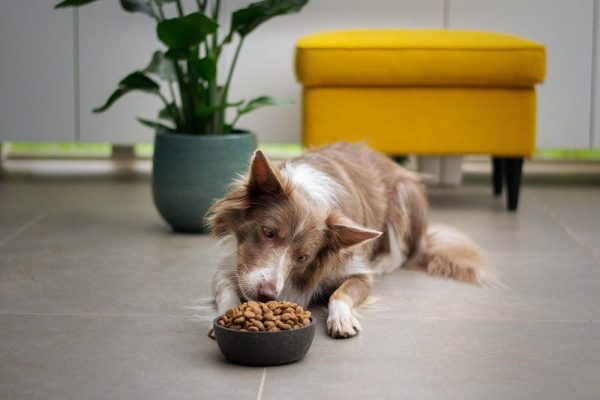All dogs, regardless of breed, require training once you’ve brought them home. Luckily, many dog breeds take well to training and pick up new things quickly. But what about those dog breeds that don’t do so well with training?
Some canines are simply harder to train for various reasons. These reasons include a lack of motivation, behavioral predisposition, a dog’s history with training, physical ability, and independence. The trainer’s experience and abilities also play an important role. But which breeds are the most challenging to train? Here are the 15 hardest dog breeds to train, along with brief facts about them. It doesn’t mean these pups aren’t trainable; they just have a bit more difficulty with the process, perhaps not ideal for inexperienced trainers. Keep reading to learn more about these breeds!

How Is Trainability Classified?
How does a dog breed earn the label of “hard to train” in the first place? What traits are measured with trainability to determine that? The University of Pennsylvania created an excellent tool called the Canine Behavioral Assessment and Risk Questionnaire, or C-BARQ, and part of what this assessment measures is trainability, which they define a few things within the dog:1
- Ability to learn quickly
- Ability to respond to correction appropriately
- Ability to ignore distractions
- Ability to obey easy commands
- Willingness to fetch things
- Willingness to listen to their trainer
The easier it is for a dog breed to do these things, the easier it is to train them.

The 15 Hardest Dog Breeds to Train
1. Alaskan Malamute
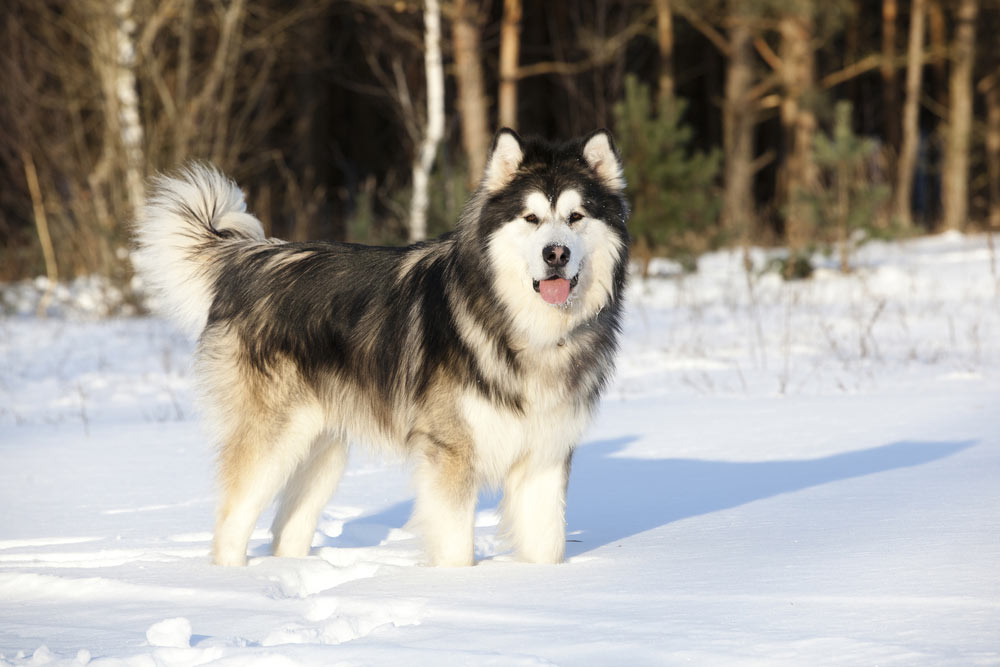
| Origin: | Alaska |
| Lifespan: | 10–14 years |
| Height: | 23–25 inches |
The Malamute is a gorgeous dog similar to the Husky. These pups are bred for cold weather and are known for their hard-working natures and loyalty. They are also known for their extreme independence, stubbornness, high prey drive, and dominant streak. All that combined equals a tough-to-train canine.
These dogs also aren’t highly motivated by rewards, like treats or even praise, after they please their owners, adding to the challenge. If you own a Malamute, you’re going to need a professional trainer to help you out, and even then, some bad habits may still occasionally pop up.
2. Australian Shepherd
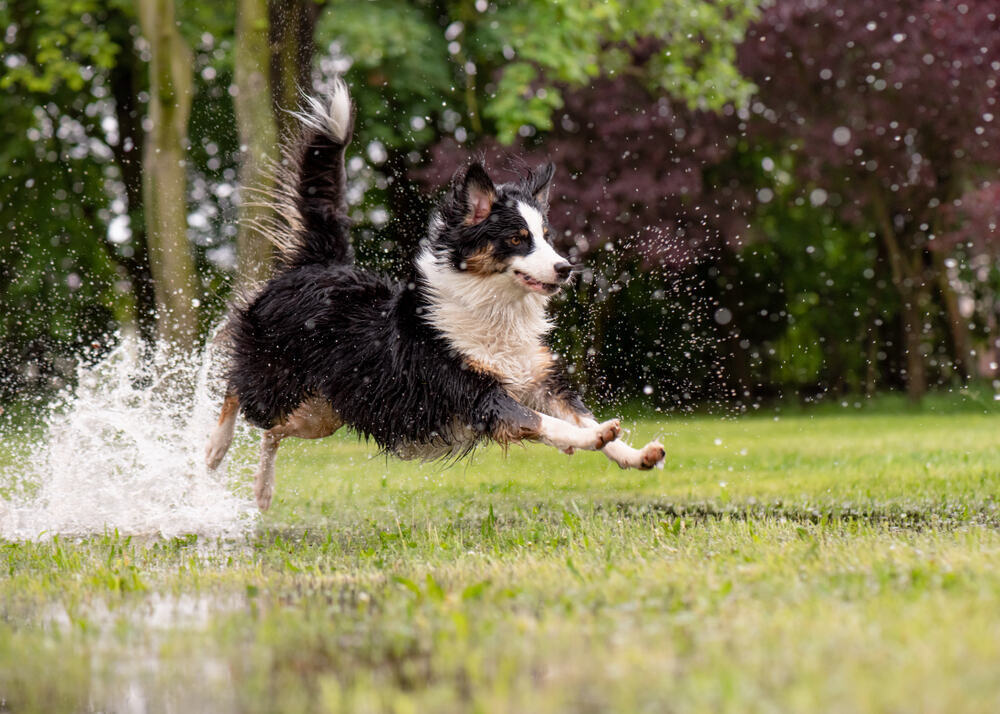
| Origin: | Western United States |
| Lifespan: | 13–15 years |
| Height: | 18–23 inches |
This dog breed is exceptionally intelligent—they’re considered one of the smartest dogs in the world, so you’d think they’d be a breeze to train.2 After all, smarter pups should pick up on things more easily, right? While this is true, the Australian Shepherd can still be a handful to train due to how energetic they are. Plus, the smarter a pup is, the easier it will be for them to become bored, so if training isn’t engaging, they’ll quickly be done with the whole thing.
To avoid these issues, focus on keeping training sessions short and frequent. Also, incorporate not only training treats but also toys, opportunities for physical activity, and movement to keep them better engaged!
3. Basset Hound
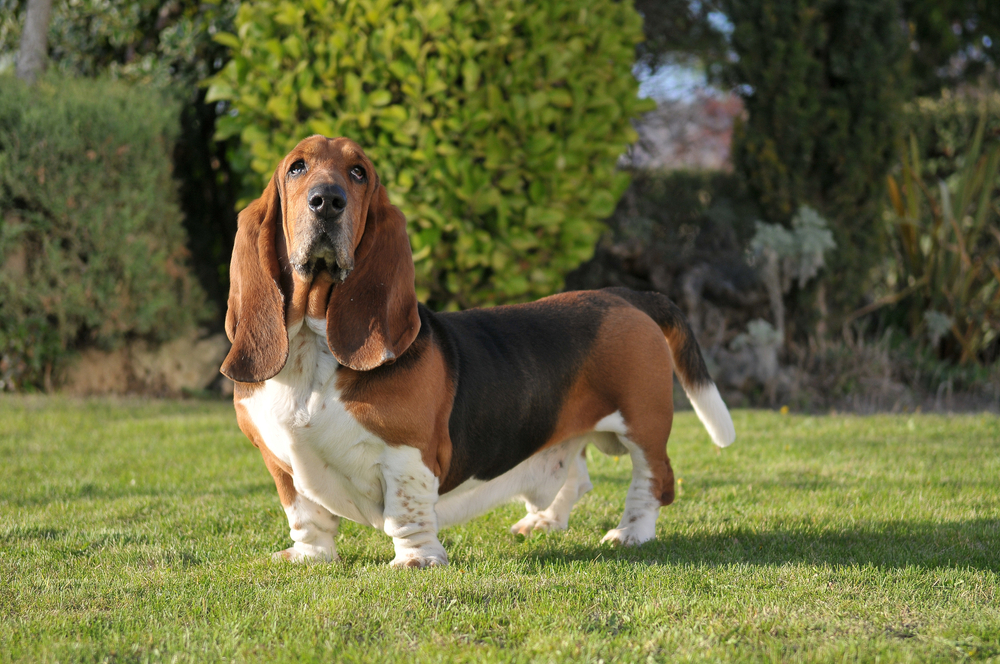
| Origin: | Belgium and France |
| Lifespan: | 10–13 years |
| Height: | 10–15 inches |
The Basset Hound is a wonderful pet due to their laidback and charming nature, but they can be tough to train. Because they’ve been bred to focus on a scent without any distractions, they can quickly lose focus if a smell catches their attention during training. These pups also have a stubborn streak and can be on the independent side, so they don’t always listen to commands.
Getting one of these pups motivated to pay attention and listen to you will probably be the most challenging part of training a Basset Hound. However, because these dogs love scents and food, you’ll have a much easier time if you can keep them focused with tantalizing treats!
4. Beagle
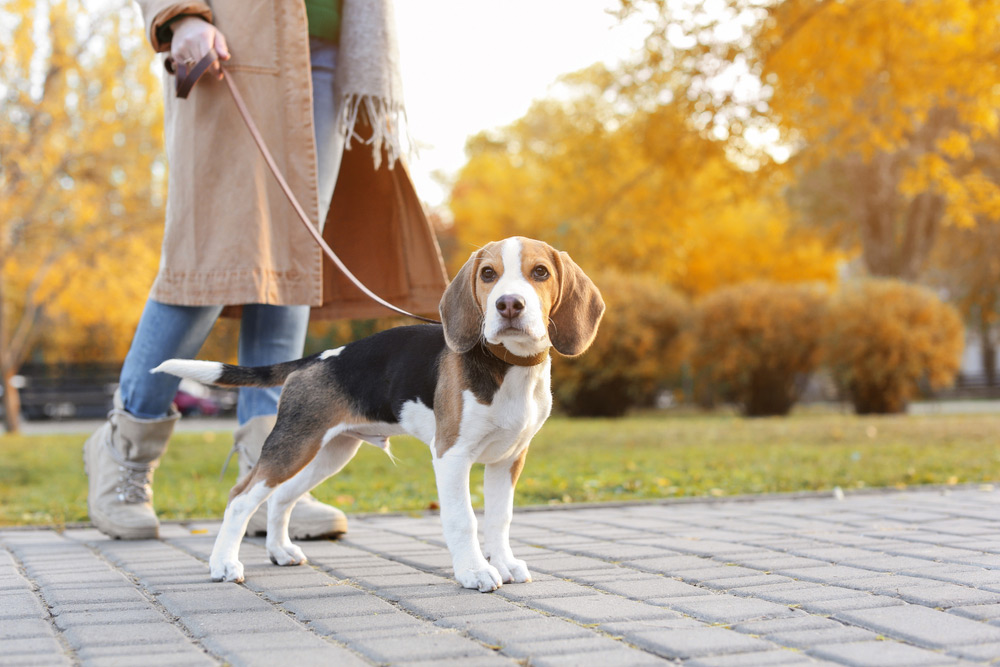
| Origin: | England |
| Lifespan: | 10–15 years |
| Height: | 13–16 inches |
The Beagle is one of the best family dogs around, which is no surprise considering their happy-go-lucky nature and utter cuteness. As sweet and friendly as this breed is, though, they aren’t always the easiest to train. Most of the reason why comes down to a common hound problem—getting distracted by scents around them and wanting to trace the source. This tendency makes training with distractions a considerable challenge. This breed can also be stubborn and want to do things their way.
The good news is that the Beagle is incredibly food-motivated, so having high-value rewards on hand during training will help immensely!
5. Bloodhound
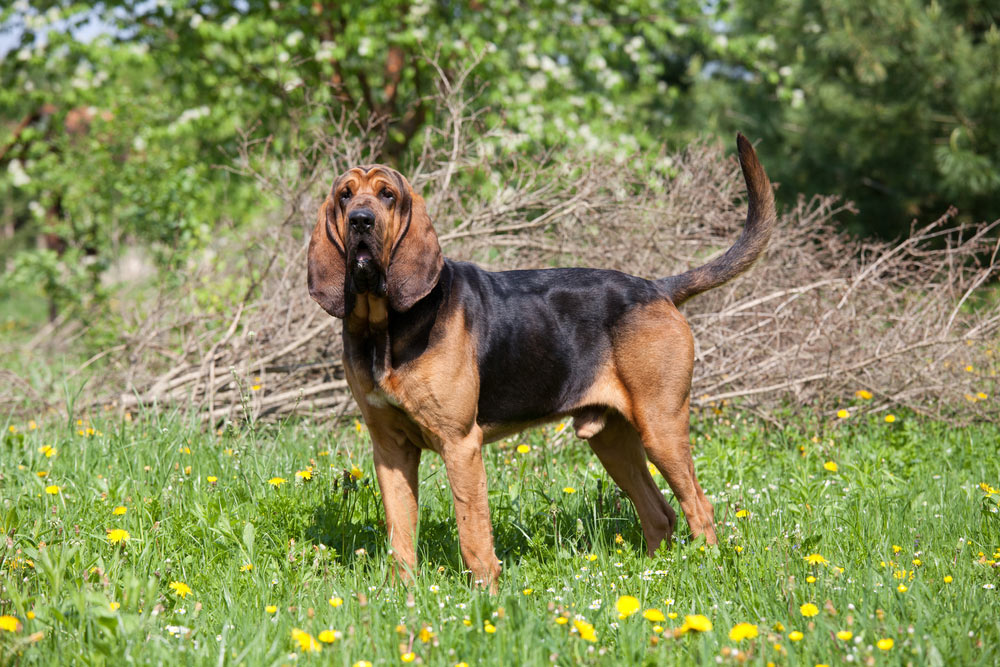
23–27 inches
| Origin: | Western Europe |
| Lifespan: | 10–12 years |
| Height: |
And here’s yet another hound, so you can probably guess what issues might arise during training. Most hounds can get easily distracted by scents and ignore training, but that goes even more so for the Bloodhound. These are the canines used by law enforcement to hunt for missing persons, so they have truly exceptional noses. That makes getting sidetracked that much simpler for them.
And though this breed can be affectionate with their families, they can easily develop a dominant streak and try to be the boss, which poses other challenges during training. Add to all that their stubbornness and sense of independence, and you can see why these dogs do better with experienced owners.
You can incorporate positive reinforcement and high-value treats to encourage them during training, though.
6. Border Collie
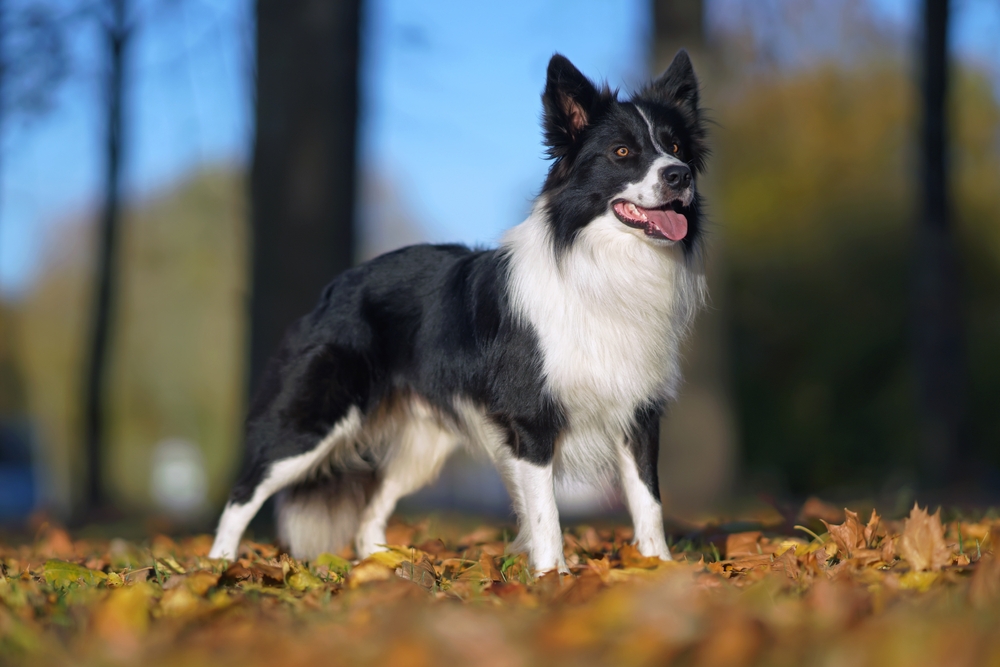
| Origin: | United Kingdom |
| Lifespan: | 12–15 years |
| Height: | 18–22 inches |
Border Collies are known for their extreme loyalty and high energy, both of which make them a blast to be around. This breed is intelligent, too, so you’d think training would be pretty simple. However, the breed’s high energy and desire to get that energy out, as well as to look for a job they can do, could cause them not to do so well during training. But if those behaviors aren’t handled early on, they could lead to destructive behaviors, so you have a bit of a catch-22 on your hands.
One way to make training a Border Collie easier is to ensure they are getting enough exercise each day. Getting all that energy out will help this breed to better focus.
7. Bulldog
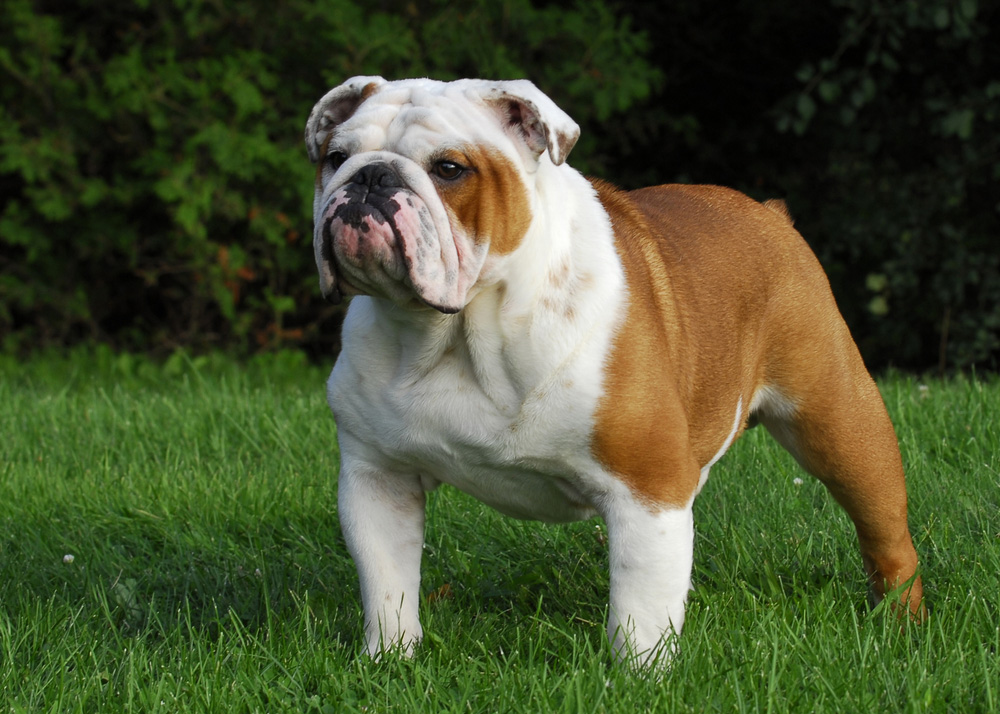
| Origin: | British Isles |
| Lifespan: | 8–10 years |
| Height: | 14–15 inches |
The Bulldog may look a bit intimidating initially, but this breed is affectionate and gentle. Despite their muscular nature, these dogs can also be quite lazy. While they enjoy a bit of activity, they’d much rather curl up in your lap; this laziness can make training them a lot of work. In addition, the breed’s occasional stubbornness and training become even more difficult.
Keeping to short training sessions, though, can make training a bit easier on your pup. Sticking to positive reinforcement and keeping yummy treats on hand will improve how well things go, too!
8. Bullmastiff
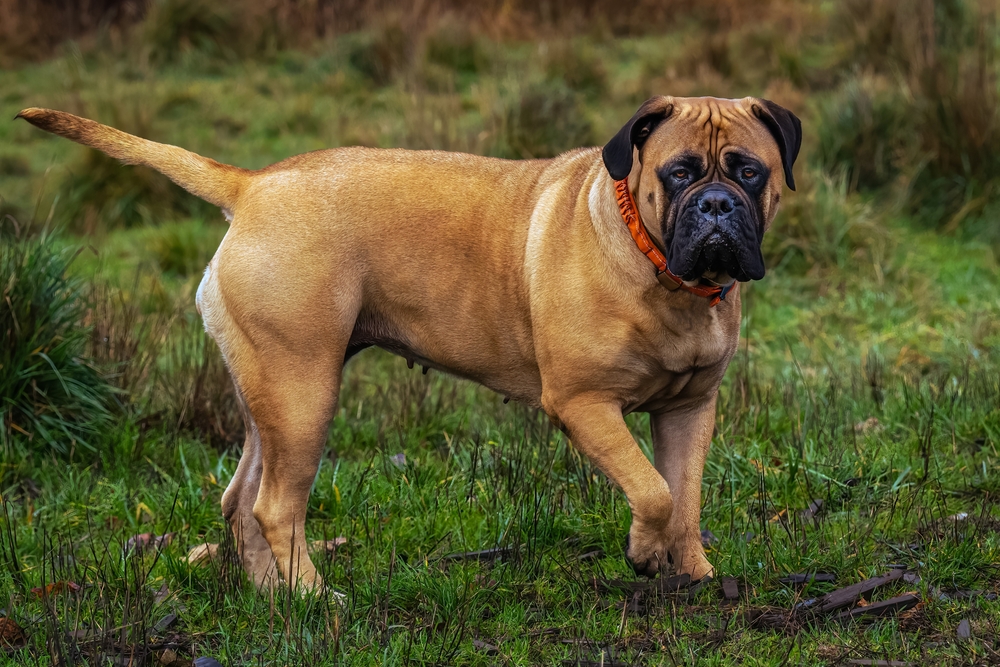
| Origin: | England |
| Lifespan: | 7–9 years |
| Height: | 24–27 inches |
A combination of the Bulldog and Mastiff, the Bullmastiff is smart and fearless. However, due to their history of being guard dogs, they can be extremely wary and occasionally aggressive toward people they don’t know, which makes training and socialization vital. The issue is that this breed is incredibly independent due to their past and can be very stubborn. This means that training this breed can be hard.
The good news is that the earlier you start training one of these dogs, the better off you’ll be. You might need to enroll them in classes rather than train them yourself.
9. Chihuahua
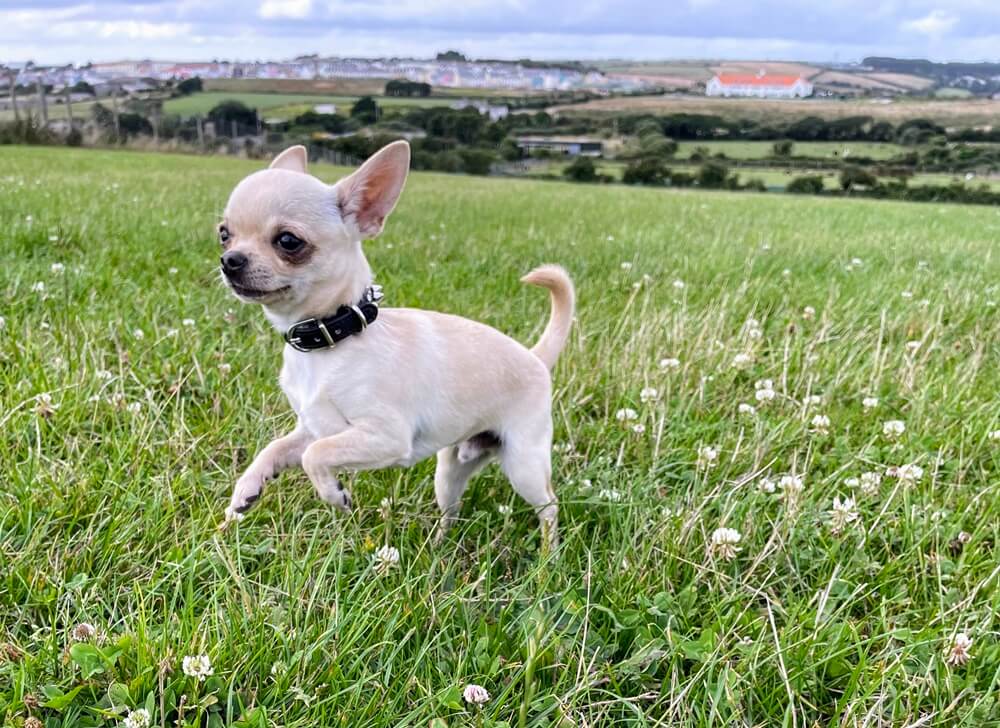
| Origin: | Mexico |
| Lifespan: | 14–16 years |
| Height: | 5–8 inches |
If you’ve ever had the pleasure of owning a Chihuahua, you know this fierce, tiny dog has a mind of their own! Chihuahuas do what they want when they want, and nobody gets in their way. You can see how that could make training one of these small canines less than simple. But without proper training, a Chihuahua might develop a habit of becoming a bit too fierce with people and other animals, which can cause issues.
This breed definitely has their own ideas about how training should go, so you’ll need to be firm with them. Stick to positive reinforcement, along with short training sessions, and plenty of delectable treats to help encourage them to learn.
10. Dachshund
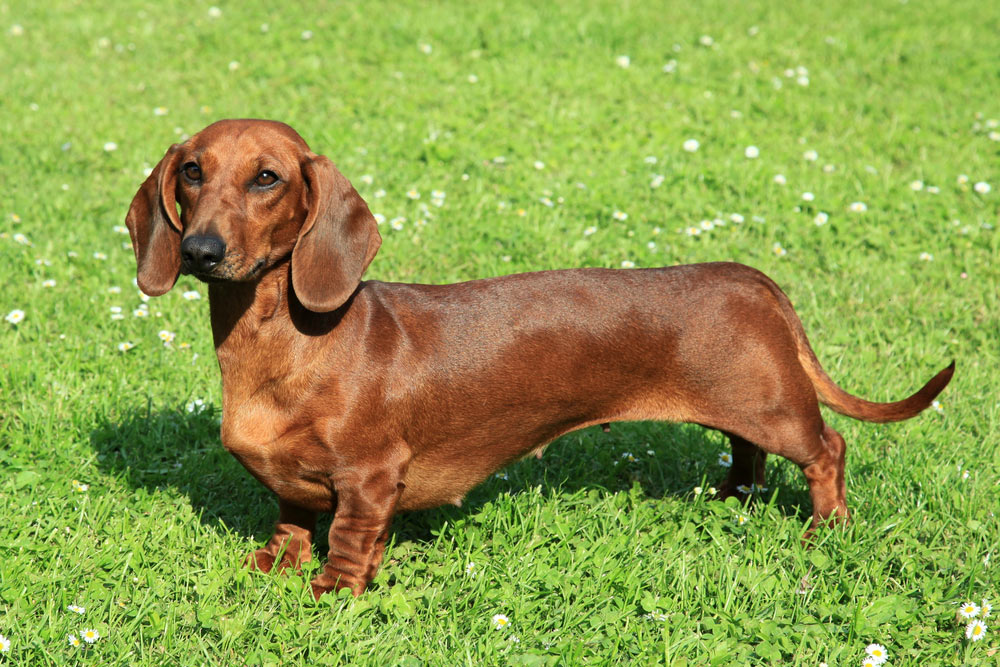
| Origin: | Germany |
| Lifespan: | 12–16 years |
| Height: | 5–9 inches |
This breed makes a fantastic pet due to their charming personalities and spunkiness. An extremely smart breed, the Dachshund was initially bred to hunt badgers, leading them to be independent thinkers who are used to making decisions on their own. So, they can be a bit of a handful during training. It’s also easy for them to get distracted, leading to ignored commands.
These pups are sensitive to negativity, so stick with positive reinforcement during training, and never yell at your Dachshund. Go with shorter training sessions and mix things up to keep your dog’s attention focused on you!
11. Jack Russell Terrier
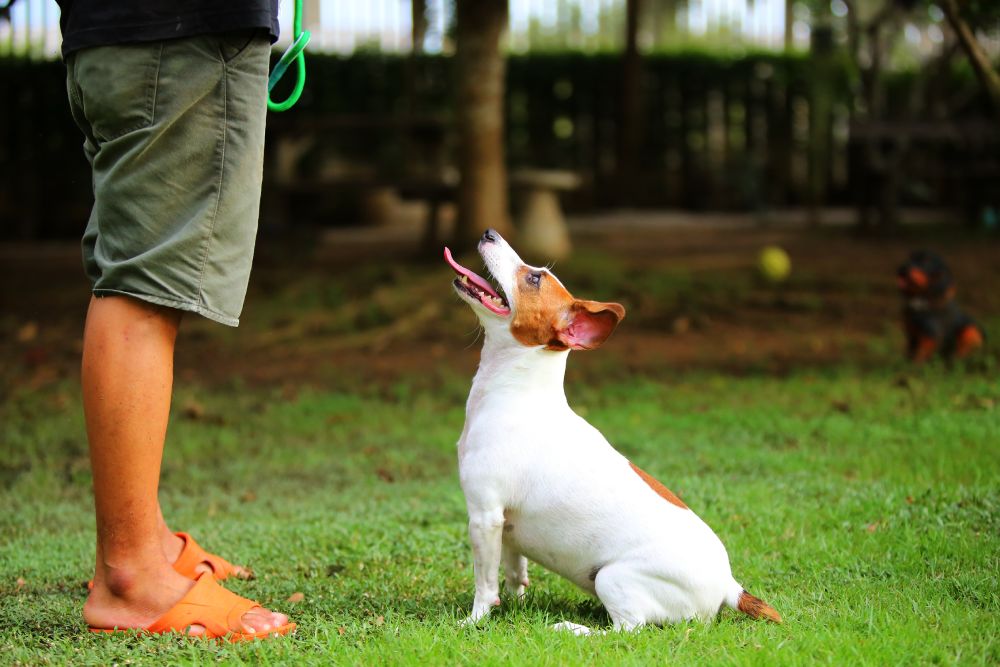
| Origin: | England |
| Lifespan: | 10–12 years |
| Height: | 10–14 inches |
Don’t let the Jack Russell Terrier’s adorableness and playful personality fool you into thinking they are easy to train! These small dogs were bred to be fox hunters, so their prey drive is incredibly high, making training them difficult. The breed can also be willful and has tons of energy, which can interfere with the training process. These dogs can be such a handful that it’s recommended that only experienced dog trainers or owners work with them.
Like with the Border Collie, ensuring this breed gets all that energy out each day will help. Because the breed is so intelligent, keeping their minds fully engaged will also make things run more smoothly. Brain games and teaching your pup tricks can help keep them focused on what you’re teaching them, too.
12. Pekingese
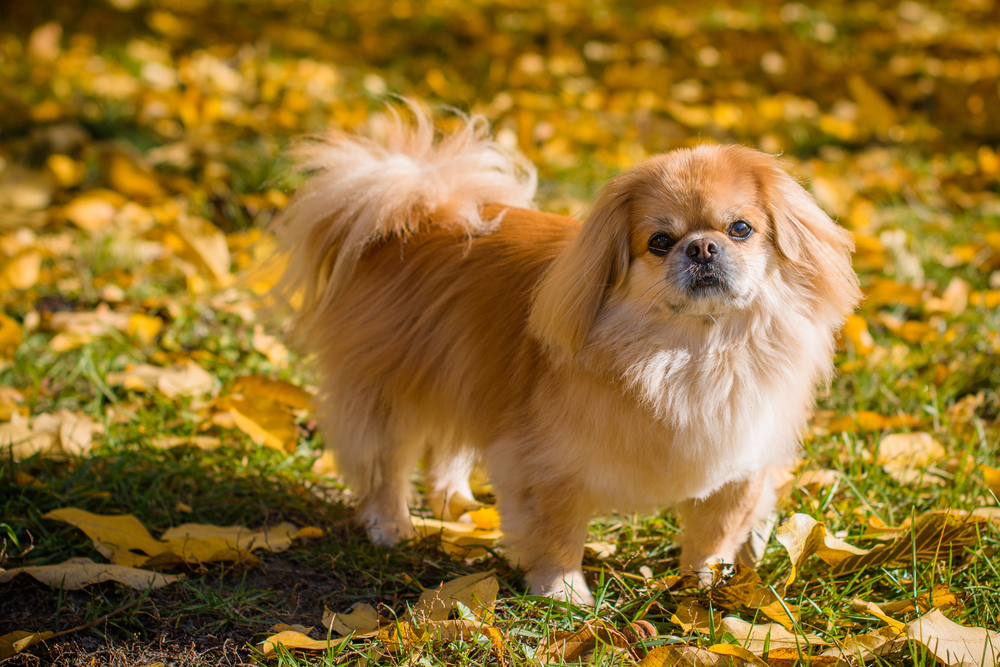
| Origin: | China |
| Lifespan: | 12–14 years |
| Height: | 6–9 inches |
It’s not uncommon for smaller dog breeds to receive little to no training. After all, they’re tiny, so really, how bad could it be if they misbehave or engage in destructive behaviors? It can be plenty bad, so training any dog, regardless of their size, is essential. With the Pekingese, though, you’ll find yourself having a harder time.
These pups may be affectionate, but they’re stubborn, have a tendency not to listen to their owners, and are incredibly independent. It may take them several times to hear a command before they decide it’s worth following. You’ll have to be firm and consistent with a Pekingese while also providing plenty of positive reinforcement!
13. Rottweiler
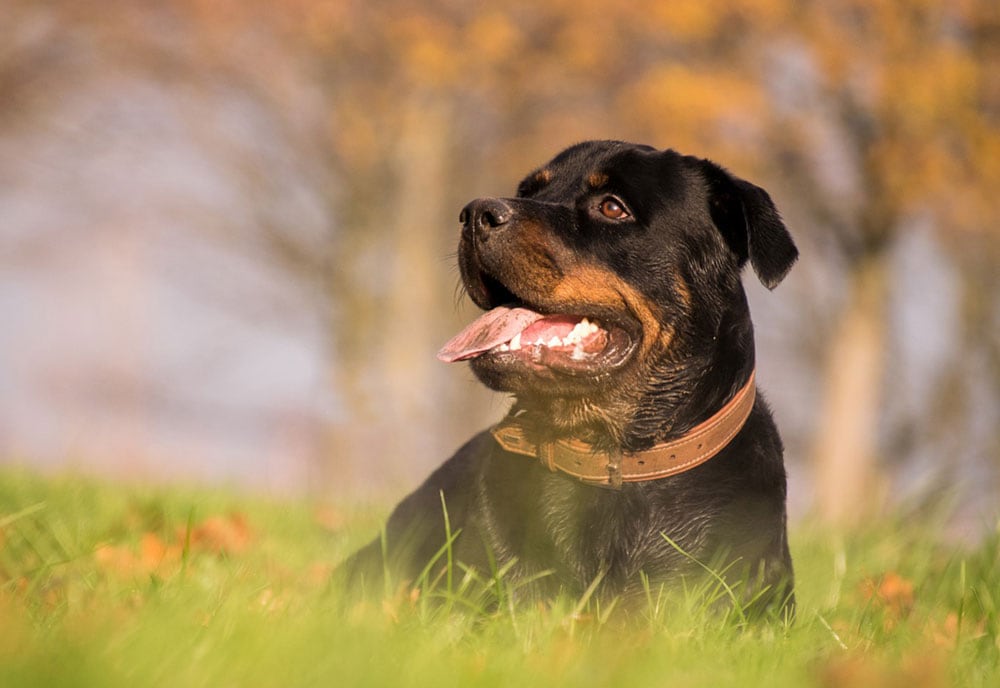
| Origin: | Roman Empire |
| Lifespan: | 8–11 years |
| Height: | 22–27 inches |
Though some may find the Rottweiler intimidating due to their size and protective nature, this dog is really a big goofball. They can make wonderful family pets, provided they have the proper training. However, this breed can be territorial, highly independent, and a bit aloof at times, making training a Rottweiler a task.
High-value treats used as a reward can help immensely, as can firm, consistent, positive training sessions. Keep things short and sweet, and enroll your pup in some doggie obedience classes, too.
14. Siberian Husky
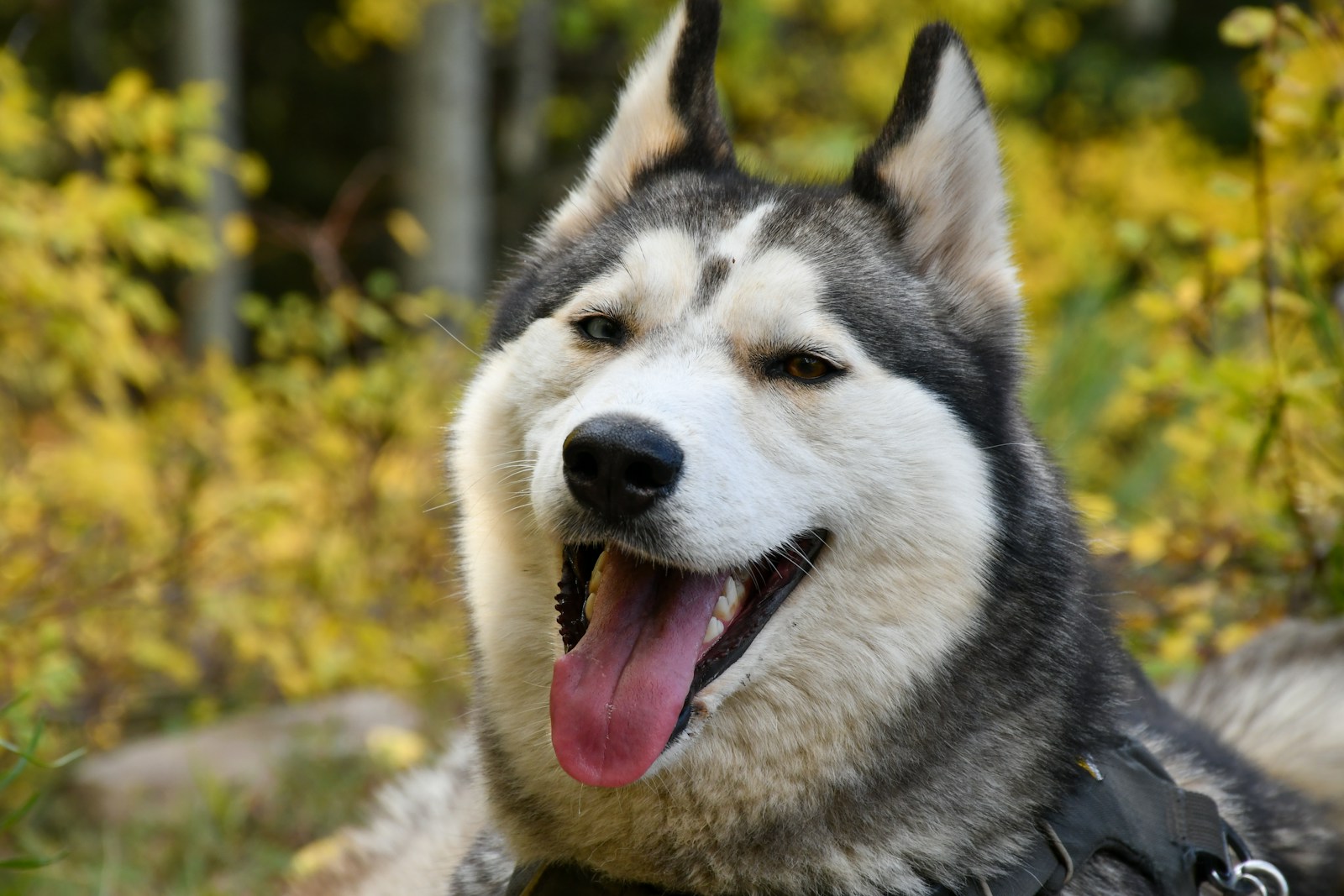
| Origin: | Asia |
| Lifespan: | 12–14 years |
| Height: | 20–23 inches |
Siberian Huskies are a gorgeously stunning breed who can make wonderful pets for the right people, but they’re certainly unique. As sled pullers, these canines were bred for independent thinking, so training them is notoriously difficult. Plus, this breed is impulsive, prone to barking and running away, stubborn, and sometimes inattentive. In addition, they don’t always respond to the typical training methods and can be easily offended.
If you want to train one of these dogs yourself rather than take them to a professional trainer, you must begin the minute you bring them home. With a ton of patience and lots of positive reinforcement, you should eventually be able to get this breed trained; just be prepared for it to take a while.
15. St. Bernard
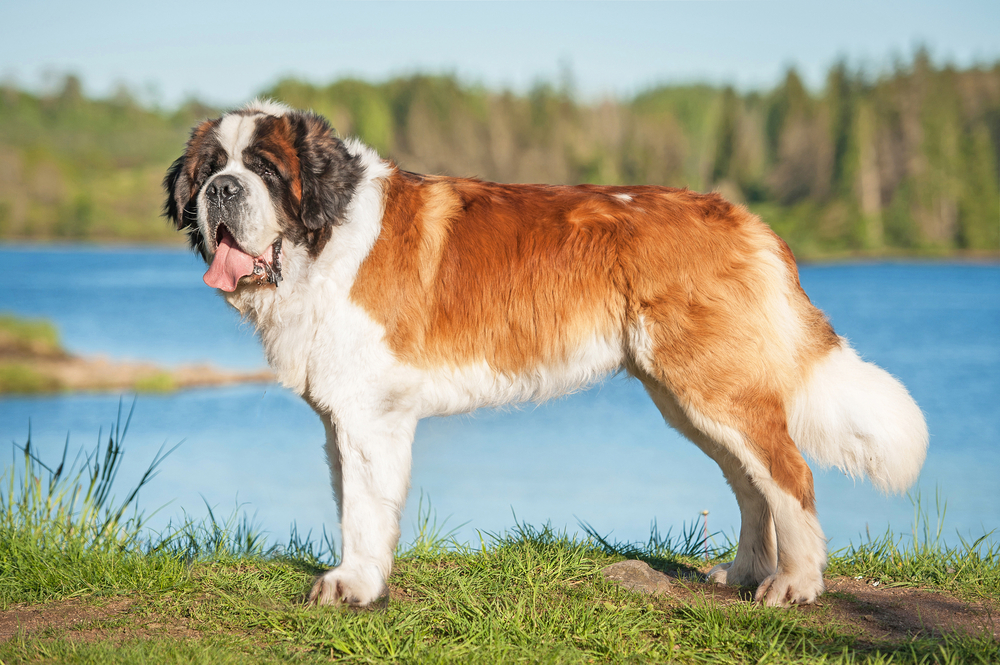
| Origin: | Switzerland |
| Lifespan: | 8–10 years |
| Height: | 26–30 inches |
Despite their large stature, the St. Bernard is incredibly gentle and sweet, so they make fabulous family dogs. An exceptionally smart breed, these dogs have been bred to be highly independent, and that independence can sometimes interfere greatly with training. However, this breed isn’t particularly stubborn, so if you can gain their attention during training sessions with tasty treats, you’ll have a much simpler time.
The St. Bernard can be overly sensitive to negative emotions and harsh words, so remember to only use positive reinforcement with them. Plenty of praise will go a long way to getting these canines to do what you want!

Final Thoughts
All dogs need to be properly trained once you bring them home, but some breeds are a bit more challenging to train than others. The dog breeds on this list all have traits, like stubbornness or independence, that make them more difficult to train. However, this doesn’t mean they are entirely untrainable; you just have to find a way to keep them focused (often with treats) when needed!
See Also:
Featured Image Credit: Dora Zett, Shutterstock
